The most important advice I can give to someone looking to choose an electric bike is: you don't have to know, master, and understand all the bike specs.
I mean, it is great to have a general idea of how bike technology works, and that will certainly help, but you really don't have to panic about technical terms like battery voltage, motor wattage, torque, and assist levels.
To make an informed decision, all you need is to understand the few ebike specs that truly matter and (equally important) how they relate to your riding needs. In most cases, these specs are the same, no matter what kind of ebike you are looking at: bike type, range, motor power, and assist mode. Once you grasp these, the rest will make much more sense.

1. Understand E-Bike Types
E-bikes come in different types, and each type is made with particular features and specs to appeal to different kinds of riders. So, once you identify the type of ebike you need, you are already halfway there, as that bike is more than likely to present the kinds of specs that will appeal to you.
i. Commuter e-bikes: For Commuting, Work, and Leisure
- If you live in an urban area and you are looking for a bike to commute to work, visit family, or just go on leisure rides, a commuter bike is what you need.
- Most of the shared bikes in major cities are commuter bikes. In fact, when you think of a bike in general, there is a good chance that the model that comes to mind is a commuter bike.
Commuter bikes are made for daily travel on city streets and paved paths. Since they are built for daily use in urban areas, their performance specs (motor power, battery, etc) are generally moderate.
ii. Mountain e-bikes: For Offroading and Adventure
- If you are particularly interested in mountain biking, then what you need is a mountain bike.
- They are designed for rough terrain and trails, and have stronger frames and bigger tires for more traction.
iii. Folding e-bikes: For Easy Storage and Transport
- Folding e-bikes are generally commuter e-bikes that have a folding mechanism that makes them compact and portable.
- If you live in an apartment or if your riding path requires you to take public transport at some point, then you must seriously consider folding ebikes.
iv. Hybrid Ebikes: For Increased Performance.
- If you want an ebike that can go faster, climb steeper slopes, and go for longer, but is still easy to ride for commuting to work or just leisure trips in the city, a hybrid ebike is your best bet.
- A hybrid ebike is a perfect middle-of-the-road option: a blend of mountain ebike performance and commuter bike smoothness and efficiency in urban settings.
All in all, you choose an ebike based on your lifestyle and where you’ll ride most often. For instance, if you mostly ride to work in the city, a commuter model with a long range will suit you better than a heavy off-road bike.
Explore Hybrid bikes vs road bikes

2. Check Key Performance Specs
After deciding which type of e-bike best suits your riding needs, the next step is to focus on performance specs. There are three important specs to check when choosing an ebike: motor power, battery capacity, and range.
i. Motor Power: The Strength of The E-bike
Motor power affects how strong and responsive the e-bike is: in other words, how quickly it can accelerate, and what intensity of slopes it can climb.
Higher wattage ebike motors (500-750W) offer more torque for steep hills and quick acceleration, while lower wattage motors (250-350W) are quieter, lighter, and more energy-efficient.
- Choose higher motor power if you live in a hilly area or plan to carry extra weight.
- Choose lower motor power if you ride mostly on flat terrain and prefer longer battery life.
ii. Battery Capacity:
It is always important to check how long an e-bike battery lasts . Battery capacity is crucial because it determines how far you can ride and how much power the motor can draw before needing a recharge.
- It is important to match battery size to riding habits: long-distance commuters need more capacity, while casual riders can save money with a smaller one.
- A higher-capacity battery (measured in watt-hours) means longer range, stronger performance on hills, and fewer charging stops.
iii. Range: How Far An Ebike Can Go
Range tells you how far the e-bike can travel on a single charge. It’s mostly determined by the battery’s capacity (measured in watt-hours) and how efficiently the bike uses that power.
Typical e-bike ranges by type:
- Commuter ebikes: 30-70 miles
- Mountain ebikes: 20-50 miles
- Folding ebikes: 20-40 miles
If you have long daily rides or don’t want to charge often, look for a model with a larger battery and higher range. But if you only ride short distances, you can save money with a smaller battery.

3. Consider Pedal Assist vs. Throttle Assist Capacity
The third important factor to consider when choosing an ebike is how it delivers power: i.e, pedal assist vs throttle assist.
- Pedal assist helps you cover more distance while pedaling with less energy because it enhances your pedaling. Also, a pedal-assist bike provides that natural look and feel of riding, and helps the battery last longer.
- Throttle assist lets you ride without pedaling at all. It is perfect for when you’re tired or need an extra boost up a hill.
So, how do you choose between the two? For most modern ebikes, you don't have to. Many modern ebikes have a pedal assist distance and a throttle assist distance.
- The pedal assist distance is the maximum distance you can cover on pedal assist only.
- The throttle assist distance is the maximum distance you can cover on throttle assist only.
To efficiently maximize your riding effort and preserve your battery, you can switch between pedal assist and throttle assist as you see fit.
If you want an exercise-friendly, efficient ride, go for pedal assist. If you prefer a more relaxed, moped-like ride, throttle assist adds comfort and flexibility.
4. Check These Five Other Features That Matter
Once you’ve nailed the main specs, it’s worth paying attention to a few other details that affect comfort, safety, and overall value.
- Check Brake Type: Hydraulic or disc brakes provide strong, reliable stopping power.
- Consider Frame design (Step-Through vs Step Over): A lower, step-through frames make mounting an ebike easy and convenient. A step-over frame is better if you are into sports biking or you just want a sport-like look.
- Check Tire Size: Wider tires give more stability and grip, while narrower ones are faster on smooth roads.
- Check the Gearing System: Multiple gears make it easier to handle hills and adjust to different riding conditions. 3-speed gears and 7-speed gears are both great options.
- Check Suspension: Front or full suspension improves comfort on bumpy roads or trails.
These don’t necessarily define your e-bike’s core performance, but they can make a big difference in how enjoyable and safe your rides feel.

How to Choose An Ebike: Summary
- First, identify your riding conditions (city, hills, trails, mixed) and your daily range needs.
- Use those to narrow your style (commuter, mountain, trike). Viribus gives you options that fit different styles.
- Then match a model whose motor, battery, and assist features meet or exceed your realistic expectations.
- Finally, check the secondary features (frame, brakes, display, tires, suspension, cargo) to make sure daily usability, comfort, and reliability are solid.
Recommended Viribus Ebikes to Choose From
1. Viribus Step‑Through Electric Bike
Consider this model if you prioritize comfort, daily commuting, or casual city riding. It uses a 48 V battery and offers a pedal-assist range of 45 miles and a throttle-only range of 25 miles. It has a soft saddle, front suspension, dual-disc brakes, and a clear digital display.
The step-through frame makes it easy to mount and dismount, especially for ladies, shorter riders, or those with mobility constraints.
2. Viribus Panther Electric Mountain Bike
If you are looking to choose an ebike for riding trails, hills, or rougher surfaces, consider the Viribus Panther Electric Mountain Bike. With a motor power of 500 W (peak), bigger 26'' x 2''tires, a high-tech lithium battery, it can reach a stop speed of 20Mph. This electric mountain bike is geared more toward off-road or mixed-terrain use.

Conclusion
You don’t need to memorize every technical term to buy the right e-bike. Just focus on what really matters. Understand your riding goals, then choose an e-bike type that fits, with the right balance of range, motor power, and assist features. Once those are in place, consider the extra features that enhance your comfort and safety.
The best e-bike isn’t necessarily the one with the most advanced specs: it’s the one that fits your lifestyle, your terrain, and your comfort.
Consider these 4 best cruiser bikes for women in 2025

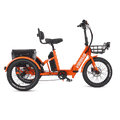

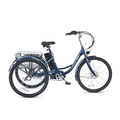
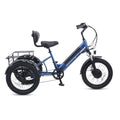
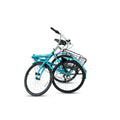
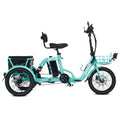

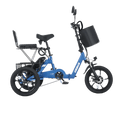

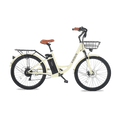
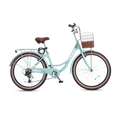
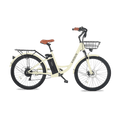
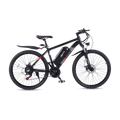
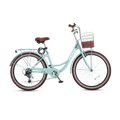

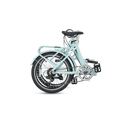
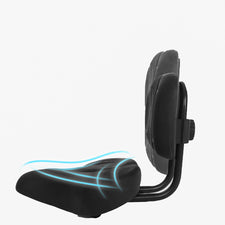





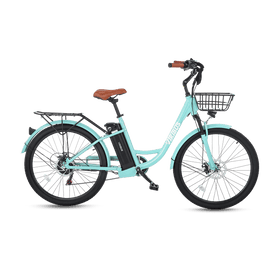
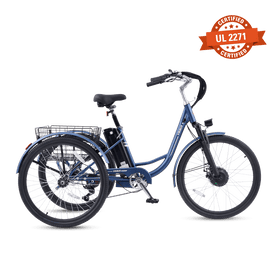
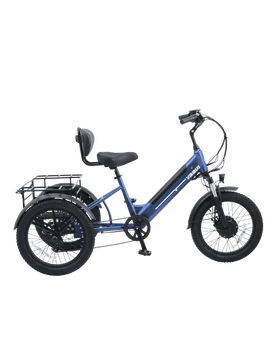



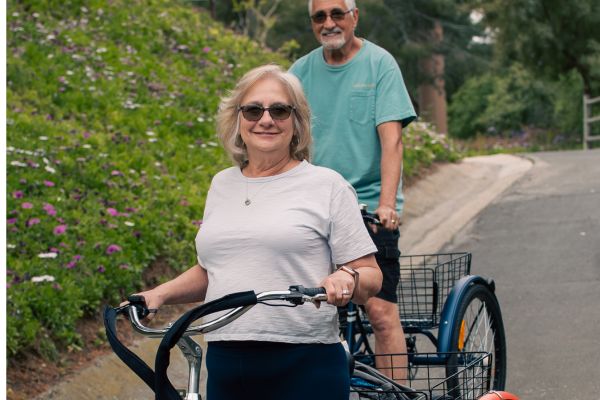
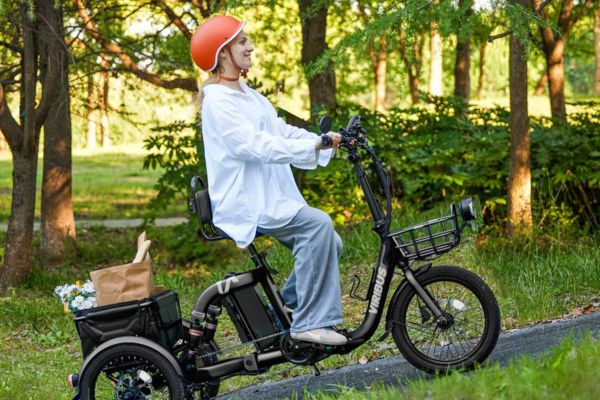
Leave a comment
All comments are moderated before being published.
This site is protected by hCaptcha and the hCaptcha Privacy Policy and Terms of Service apply.